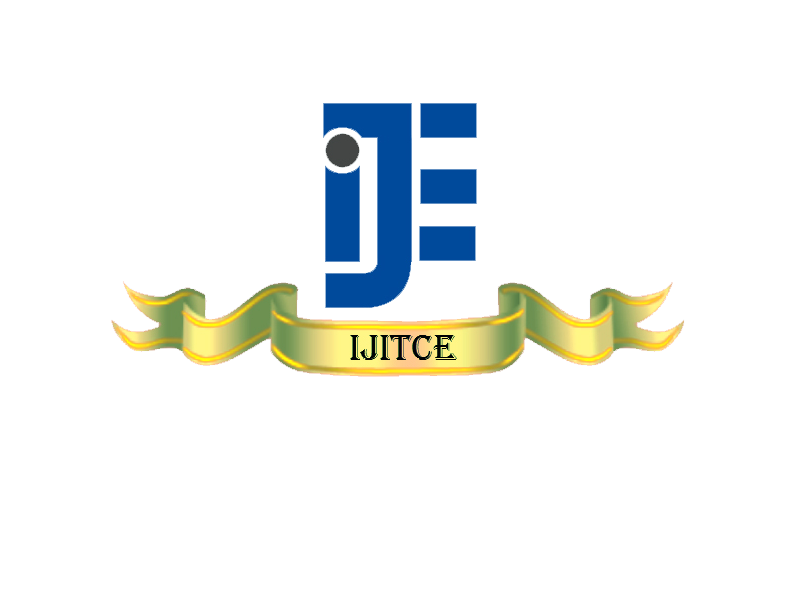April 2019 Issue Vol.9 No.4
Designing, 3D Printing of a Quadruped Robot and Choice of Materials for Fabrication
https://ia601405.us.archive.org/16/items/vol9no0402/vol9no0401.pdf
Akash Maity
Metallurgical and Materials Engineering, National Institute of Technology Durgapur
Mahatma Gandhi Rd, A-Zone, Durgapur-713209, West Bengal, India
Koustav Roy
Mechanical Engineering, National Institute of Technology Durgapur
Mahatma Gandhi Rd, A-Zone, Durgapur-713209, West Bengal, India
Dhrubajyoti Gupta
Mechanical Engineering, National Institute of Technology Durgapur
Mahatma Gandhi Rd, A-Zone, Durgapur-713209, West Bengal, India
Abstract:
Purpose-This paper is based on design of a quadruped robot and manufacturing it with 3-D printer followed by its detailed analysis. It focuses on the
advantages of additive manufacturing rather than conventional manufacturing techniques and also highlights its limitations. The consequences of choice of
different materials for 3-D printing are evaluated in this report.
Design/methodology/Approach- The parts were designed in CAD software and made into Stereo lithography files, which were fed into the 3-D printing software. They were printed with the selection of ABS material. Low torque servos were employed in the beginning of the assembly and were controlled with the Arduino Uno microcontroller.
Findings- The versatility of legged robots require materials with high strength to weight ratio, where 3003 aluminium alloy sheets proved to be a better choice than
conventional ABS. The ABS legs buckled under load and proved to be an inferior material choice for fabrication. The aluminium sheet fabricated legs not only
imparted structural stability to the robot but also allowed in selection of more powerful servos for added strength.The bot could now achieve significant level of stability.
Research Limitations/Implications- The power supply used for powering the bot was of SMPS type of
power supply which made it less mobile. Due to the huge demand of current by the high torque servos used later, the power supply became a huge limitation which
can be overcome by applying Lithium ion batteries.
Practical Implications- The bot can be used for SLAM and autonomous navigation in areas where it is
almost impossible for humans to access into.
Originality/Value- This paper shows a concrete study on efficacy of quick CAD designing and rapid fabrication.
3-D Printing, Kinematics, EDM, Sheet Metal, Quadruped.
A Study on Various Types of Farming
and Factors Affecting Crop Growth and Yield
https://ia601405.us.archive.org/16/items/vol9no0402/vol9no0402.pdf
G.Murugesan
Assistant Professor, Department of IT
Sree Saraswathi Thyagaraja College, (Autonomous), Pollachi, Tamil Nadu, India
Dr.B.Radha
Assistant Professor, Department of IT
Sri Krishna Arts and Science College, Coimbatore, Tamil Nadu, India
Abstract:
Agriculture in general is a term that is associated with production of food crops. Other cash crops such as jute, cotton etc., are most often neglected. Agriculture–in a broader sense does include Food crops, Cash crops, Plantation crops and Horticulture crops. Despite the boom in technology and engineering advancement, India’s economic back bone is Agriculture. The ground breaking genetic engineering or any other advancements in agriculture has not had its optimum usage in real cultivating arena. The hands on the cultivating land has little or no knowledge on recent technical advancement nor do they have expertise in using such improved methods of cultivation. This slackness of knowledge reflects in all the areas that are directly or indirectly connected with agriculture. Setbacks in productions such
as poor quantity and quality, leads to poor marketing and disguised unemployment. This reiteration of setbacks, deteriorate the socioeconomic wellbeing. This paper focuses on the various factors influencing the growth of plants cultivated in India. Analysis the relationship exists among the productions and factors and addresses the most pressing issues in agriculture.
Keywords: Agriculture, Farming, Plant Growth, Crop Rotation, Crop Seasons, IoT, Farming.
Read complete April 2019
Read complete April 2019
G.Murugesan
Assistant Professor, Department of IT
Sree Saraswathi Thyagaraja College, (Autonomous), Pollachi, Tamil Nadu, India
Dr.B.Radha
Assistant Professor, Department of IT
Sri Krishna Arts and Science College, Coimbatore, Tamil Nadu, India
Abstract: Agriculture in general is a term that is associated with production of food crops. Other cash crops such as jute, cotton etc., are most often neglected. Agriculture–in a broader sense does include Food crops, Cash crops, Plantation crops and Horticulture crops. Despite the boom in technology and engineering advancement, India’s economic back bone is Agriculture. The ground breaking genetic engineering or any other advancements in agriculture has not had its optimum usage in real cultivating arena. The hands on the cultivating land has little or no knowledge on recent technical advancement nor do they have expertise in using such improved methods of cultivation. This slackness of knowledge reflects in all the areas that are directly or indirectly connected with agriculture. Setbacks in productions such as poor quantity and quality, leads to poor marketing and disguised unemployment. This reiteration of setbacks, deteriorate the socioeconomic wellbeing. This paper focuses on the various factors influencing the growth of plants cultivated in India. Analysis the relationship exists among the productions and factors and addresses the most pressing issues in agriculture.
Keywords: Agriculture, Farming, Plant Growth, Crop Rotation, Crop Seasons, IoT, Farming.
